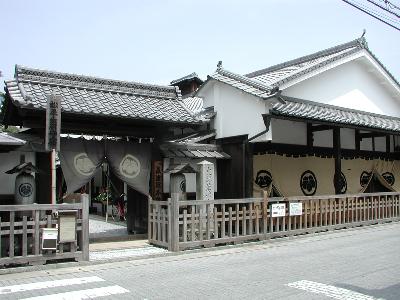|
Honjin are the inns located at post stations on the old highways. During the Edo period, they provided accommodation to traveling daimyo, kuge and officers, who were obliged as part of the Sankin Kotai system to live part of the year in Edo, the Shogun's capital.
Yakage is a town built along the Odagawa river. Major roads passed through Yakage from ancient times. In the Edo period, the town prospered as the 18th post station of the Sanyo Highway. It is the only place where the original honjin (of the Ishi family) and the original sub-honjin (of the Takakusa family) are both designated as important national cultural assets. The honjin mansion still fronts some 36m along the road, and has land 90m long with an area of 3,200m2. Dozens of buildings still stand today, hardly changed from Edo times, and provide representative examples of 'tsuma-iri' and 'hira-iri' architecture, as well as 'oni-gawara' roof tiles and 'shira-kabe' and 'namako-kabe' walling.
Every November, the town holds a festival with a daimyo procession and enjoyably recreates the atmosphere of the Edo period.
Yakage is a town built along the Odagawa river. Major roads passed through Yakage from ancient times. In the Edo period, the town prospered as the 18th post station of the Sanyo Highway. It is the only place where the original honjin (of the Ishi family) and the original sub-honjin (of the Takakusa family) are both designated as important national cultural assets. The honjin mansion still fronts some 36m along the road, and has land 90m long with an area of 3,200m2. Dozens of buildings still stand today, hardly changed from Edo times, and provide representative examples of 'tsuma-iri' and 'hira-iri' architecture, as well as 'oni-gawara' roof tiles and 'shira-kabe' and 'namako-kabe' walling.
Every November, the town holds a festival with a daimyo procession and enjoyably recreates the atmosphere of the Edo period.
| [+ADDRESS] | 
|












